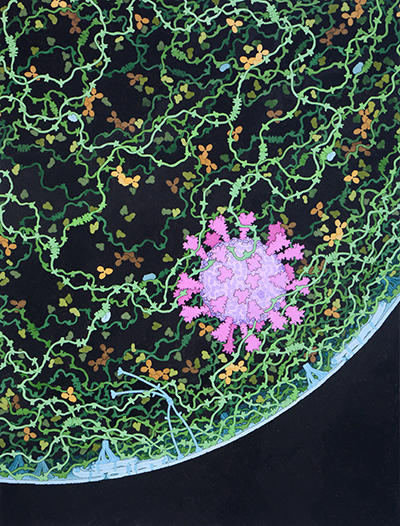New Brunswick, N.J. (March 3, 2021) – The 3D structures of more than 1,000 SARS-CoV-2 coronavirus proteins are freely available from the RCSB Protein Data Bank headquartered at Rutgers University–New Brunswick. The data bank reached the milestone this week, with 1,018 proteins as of today.
The first SARS-CoV-2 structure, a high-resolution crystal structure of the coronavirus main protease (PDB 6lu7), was released early in the pandemic on Feb. 5, 2020. Rapid public release of SARS-CoV-2 structure data has greatly increased our understanding of COVID-19. Open access to Protein Data Bank structures has facilitated design of effective vaccines against SARS-CoV-2.
“The more than 1,000 SARS-CoV-2 protein structures archived in the Protein Data Bank are providing valuable insights into viral protein function and supporting structure-based drug discovery of small-molecule anti-viral agents, neutralizing antibodies and vaccines,” said Stephen K. Burley, director of the RCSB Protein Data Bank. “In addition, they are central to visualizing and understanding new variants of the virus emerging in different geographies. The impact of structural biologists on research related to COVID-19 is a testament to the power of the experimental tools they use and their commitment to making data open access for the public good.”
“Looking beyond the current pandemic, open, public access to PDB structures will help us to manage ongoing Middle East Respiratory Syndrome virus outbreaks in endemic areas and prepare better for when the next coronavirus jumps the species barrier to humans,” said Burley, University Professor and Henry Rutgers Chair who also directs the Institute for Quantitative Biomedicine.
The Protein Data Bank archive houses more than 175,000 3D structures for proteins, DNA and RNA that are freely available worldwide. The archive, jointly managed by the Worldwide Protein Data Bank partnership, includes data centers in the United States, Europe and Asia. U.S. operations are led by the RCSB Protein Data Bank at Rutgers, the University of California, San Diego-San Diego Supercomputer Center and the University of California, San Francisco.
To interview Burley, contact Christine Zardecki, deputy director of the RCSB Protein Data Bank, at christine.zardecki@rcsb.org
###
Broadcast interviews: Rutgers University has broadcast-quality TV and radio studios available for remote live or taped interviews with Rutgers experts. For more information, contact Neal Buccino at neal.buccino@echo.rutgers.edu
ABOUT RUTGERS—NEW BRUNSWICK Rutgers University–New Brunswick is where Rutgers, the State University of New Jersey, began more than 250 years ago. Ranked among the world’s top 60 universities, Rutgers’s flagship is a leading public research institution and a member of the prestigious Association of American Universities. It has an internationally acclaimed faculty, 12 degree-granting schools and the Big Ten Conference’s most diverse student body.
